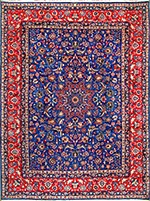Textiles Studies
Date of this Version
1989
Document Type
Article
Citation
Aramco World, volume 40, Number 3. May/June 1989
Abstract
The story of Western trade with Persia in textiles and carpets casts a fascinating light on the exciting, sometimes turbulent history of the centuries following Europe's Age of Exploration. The intense commercial and political rivalries of European mercantile expansion during the 400-year period from about 1500 to 1900 is revealed both by official historical documents - treaties, royal decrees and contracts - and by more personal ones, such as the reports of traveling merchants. Through the details of production and trade that these documents contain, we can view textiles and carpets as key commodities in the international marketplace. They played important roles in the establishment of bilateral commercial relations, the creation of international trade networks, the regularization of diplomatic exchanges, and even in occasional armed conflict, as the political interests of Europe and the East sought to accommodate and advance their ever-shifting commercial interests. In the 16th and 17th centuries raw silk and finely woven quality textiles were commercial mainstays of the Persian crown, supplemented by luxury carpets marketed at the highest court and commercial levels. After a period of political instability and economic disruption in the 18th century - when intense European rivalries disrupted international trade - manufactured imports from Europe upset Persia's internal trade balance. Slowly carpets supplanted textiles as a major export. European investors organized the commercial production of carpets in the East specifically to broaden the export market in the 19th century, and it is these latter-day products that are the Persian carpets most familiar in the West.
Included in
Art and Materials Conservation Commons, Art Practice Commons, Fiber, Textile, and Weaving Arts Commons, Indigenous Studies Commons, Museum Studies Commons


Comments
Copyright © 1989 Aramco Services Company